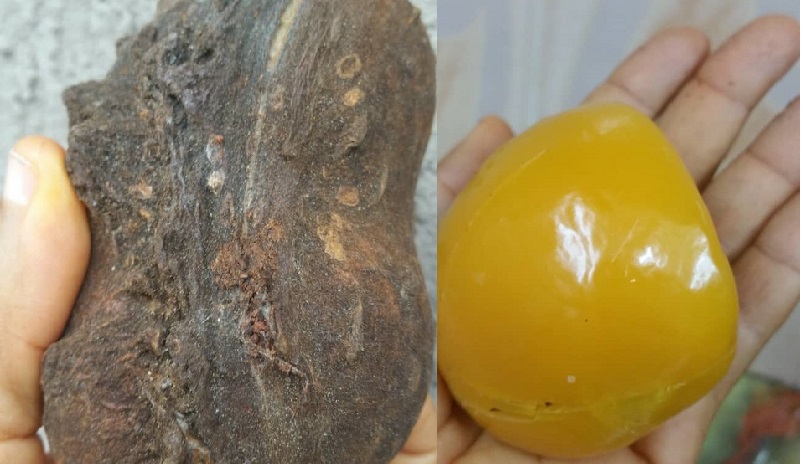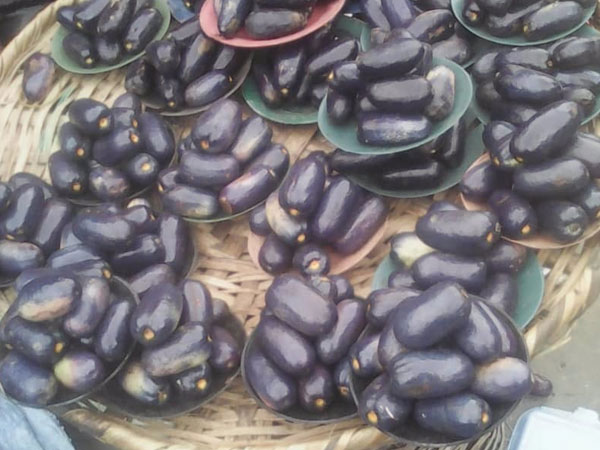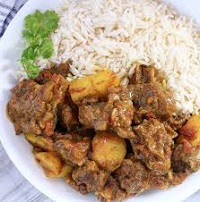Yellow Monkey Kola Amazing Health Benefits
Yellow Monkey Kola Health Benefits and Nutritional Value
Yellow Monkey Kola is the most prevalent form of African indigenous wild fruit known as monkey cola, which may be found in the southern areas of Nigeria among homes and villages (looking for where to buy monkey kola?)
Related >> Health Benefits of Monkey Kola You Should Know
It has several potential contents such as beta-carotene, vitamin C, riboflavin, niacin, thiamine, flavonoids, alkaloids, saponins, tannins, fiber, and other minerals and phytochemical properties that are nutritious to health. It is called Ochiricha or Achicha in Igbo, Ndiyah in Ibibio, and Efik.
Table of Contents
Yellow Monkey Kola Amazing Health Benefits
Vitamins, carbs, phosphate, potassium, calcium, and magnesium are all nutrients found in this fruit. It includes vitamins, minerals, and other nutrients that are useful to human health in a variety of ways, including the following:
- Maintains Healthy Gastrointestinal Tract
Also known as cola parchycarpa, contains soluble fiber, which helps to maintain the health of the gastrointestinal tract.
Its soluble fiber protects the hollow organs that connect the mouth, big and small intestines, esophagus, and anus. This means that the effect begins with the ingesting process and continues through egestion.
- Assists with weight loss
Monkey kola is a local fruit that is high in vital nutrients, making it ideal for weight loss and weight management.
It contains fiber, which helps to maintain body weight by balancing calorie intake with the amount lost.
It’s a wonderful weight-loss diet because of its minimal caloric effect. Fruits and vegetables that are high in fiber and low in calories are the greatest for weight loss, according to nutrition experts.
According to their findings, taking just 30 grams of fiber per day can aid in weight loss.
- Improves the health of the skin
This yellow monkey cola’s beta-carotene concentration contributes to a good skin boost by giving it a pleasant glow.
This beta-carotene is a powerful antioxidant and provitamin A carotenoid that enriches the skin by mending and preserving damaged skin cells.
It protects the skin from aging effects like wrinkles by providing antioxidant protection.
- Enhances Eye Health
The body converts the fruit’s beta-carotene into vitamin A, which helps to maintain eye health and improve vision.
Vitamin A, found in yellow monkey kola, is a naturally occurring vitamin that is essential for normal vision and avoiding eye abnormalities caused by a lack of the vitamin.
- Assists with the Body’s Metabolism
The fruit contains riboflavin, generally known as vitamin B2, which aids in the metabolism of fats and proteins in the body.
Vitamin B-2 is a water-soluble vitamin that plays a crucial role in many metabolic activities, particularly those that require the breakdown of carbohydrates into sugar for energy production.
- Moderates Body Cholesterol
Because of the presence of niacin (vitamin B3), also known as nicotinic acid, this fruit aids in the reduction of lower bad cholesterol, also known as low-density lipoprotein, and the improvement of high-density lipoprotein, also known as good cholesterol.
An experiment was conducted using a combination of niacin and satin (cholesterol control) to compare their effects on cholesterol.
The results of the experiment were compared to the effect of niacin on body cholesterol, which revealed that niacin reduced the level of low-density lipoprotein (LDL) in the blood while increasing the level of high-density lipoprotein, HDL. 7. Enhances cardiovascular health
Because it is high in flavonoids, which are compounds that enhance heart health, moderate consumption of cola parchycarpa can help to minimize the risk of heart disease.
Clinical studies have indicated that flavonoids have beneficial benefits for the heart. They have been found to protect against coronary artery disorders, which cause heart damage and cardiac injuries.
- Maintains Healthy Bones
Yellow monkey kola contains essential mineral elements that are necessary for supporting strong bones, protein synthesis, and the appropriate functioning of the body’s crucial cells, organs, tissues, and overall body.
Mineral intake, particularly minerals found naturally in fruits like yellow monkey kola, can assist to reduce the risk of bone loss.
Some elements in this fruit, such as calcium and potassium, interact along with other nutrients, including protein and vitamin D, to reduce the risk of osteoporosis-related fractures.
Nutritional Contents in Yellow Monkey Kola
Yellow monkey kola contains many important compounds, which are nutrients that aid in the regulation of many chemical processes in the body. Another feature of this fruit is that it provides a nutrient that the body cannot produce in sufficient amounts.
Vitamins B and C, minerals potassium, calcium, beta-carotene, and amino acids are among the nutrients found in this fruit. It also has a lot of antioxidants, is low in calories, and has no fats.
Monkey Kola and Types
The yellow type of monkey kola has the botanical name Kola lepidota, whereas the white monkey kola fruit has the botanical name Kola parchycarpa.
The yellow monkey kola fruit, on the other hand, has more nutritional and medicinal value than the red and white monkey kola.
The waxy mesocarp of White Monkey Kola, also known as pachycarpa, is generated in the edible section of the follicle.
This variety of monkey kola fruit has a strong fruit sweetness taste.
The reddish exocarp of Red Monkey Kola, also known as cola lateritia, has a white seed within. It, like other varieties, has a variety of medical properties and health benefits associated with it.
Yellow Monkey Seed
The seed of this fruit is somewhat flattened and obliquely oval, with two flattened surfaces called the mesocarp surrounding it.
Monkey kola fruit has been shown to provide a variety of therapeutic effects and benefits for human health and lifestyle, although the seeds are not as edible as the fruit.
As a Natural Remedies
It has been used for ages as a natural remedy for disorders that may interfere with a healthy life. Other benefits achieved as a result of it tend to improve human health and lifestyle in general.
Micronutrients, low caloric, protective, and nutritional properties are abundant in Cola parchycarpa.
Side Effect
The yellow aril and fruit pericarp of this yellow monkey kola are high in nutrients and should be consumed for health reasons, but not in excess to prevent micronutrient deficiencies.
FAQs
About Health Benefits and Nutritional Value of Yellow Monkey Kola
- Maintains Healthy Gastrointestinal Tract
- Helps in Weight Management
- Boosts Skin Health
- Improves Heart Health
- Maintains Healthy Bones
- Improves Eye Health
- Helps in Body Metabolism
- Moderates Body Cholesterol
What is the nutritional value of monkey kola?
Iron, zinc, and copper, as well as B-vitamins and vitamin C, were abundant in monkey kola.
The phytochemical concentration was quite high, with flavonoids (415-494mg/100g) being the most prevalent.
Monkey kola is a fruit that should be used to its maximum capacity in terms of health advantages.
Is the seed of monkey kola edible? Is monkey kola seed edible?
The plant is native to tropical Africa, with its greatest diversity found in West Africa.
The fruits are a favorite cuisine of the indigenous peoples of southern Nigeria and the Cameron. Unlike the seeds of the kola nut, the seeds of the monkey cola species are not edible (C. nitida)
What is a monkey kola?
Monkey kola refers to several edible wild relatives of the West African kola nut, such as Cola lateritia. C. pachycarpa K. Schum, C. lepidota K. Schum, and C. lepidota K.
What is the definition of a monkey fruit? What is a monkey fruit?
Monkey fruit is a popular name for a variety of plants, including species from the following genera: Artocarpus. Limonia. Garcinia. Myrianthus.
What is Obi Edun in English?
Obi-Edun is a Yoruba word that means “attached Kolanut”: Kolanut and Edun – Obi – teamed up.
Is monkey fruit dangerous to eat? Is monkey fruit poisonous?
Monkey orange fruit is buried in the sand near homesteads to allow the pulp to liquefy.
The ripe fruit can be eaten raw or sun-dried to make fruit rolls, jam, juices, or wines. Although the fruit is high in vitamin C and B vitamins, the seeds of the monkey orange are deadly.
How do you eat monkey fruit?
The ripe, tough-skinned fruit is squished between the fingers when eaten. The seeds should not be eaten, and white globs on the skin should be avoided. The flesh is sticky, and it coats the insides of the mouth.
What is monkey kola Hausa?
Monkey kola is the name given to a number of distinct Cola species native to West and Central Africa.
In Igbo, it’s called Ochicha, in Yoruba, Obi edun, and in Hausa, Goron birri, and in Efik/Ibibio, it’s called Ndiyah in Efik/Ibibio.
Is monkey kola an aphrodisiac?
Kola did not have aphrodisiac action as reported, which may explain why the seeds are mostly used by the elderly.
History of Monkey kola
Monkey kola is a common name for a group of Cola spp. relatives that yield edible, pleasant fruits. The inhabitants of southern Nigeria are native to this species.
Bottom Line
In terms of nutritional value, yellow monkey kola is a fantastic fruit. It has a sweet, crunchy taste with no fat content, as well as key nutrients and phytochemical compositions that are beneficial to one’s health.
The fruit has been linked to a variety of health benefits, ranging from internal organ metabolism to the outermost component of the body, which is the skin.
Reference:



